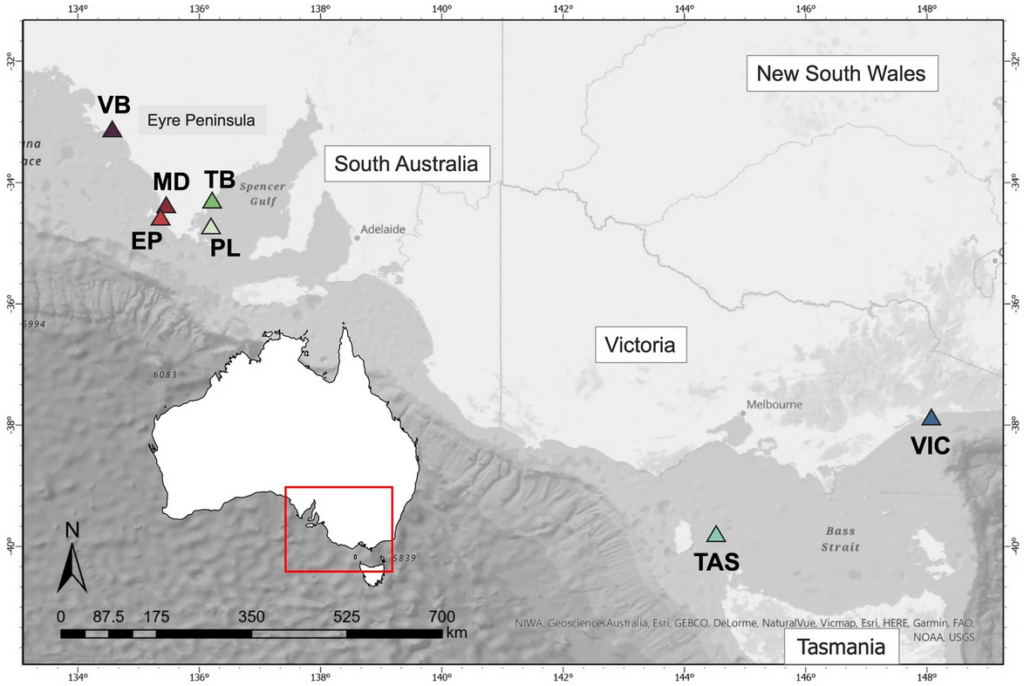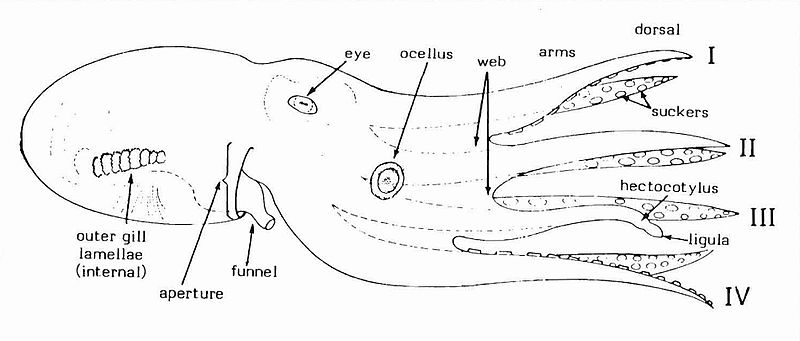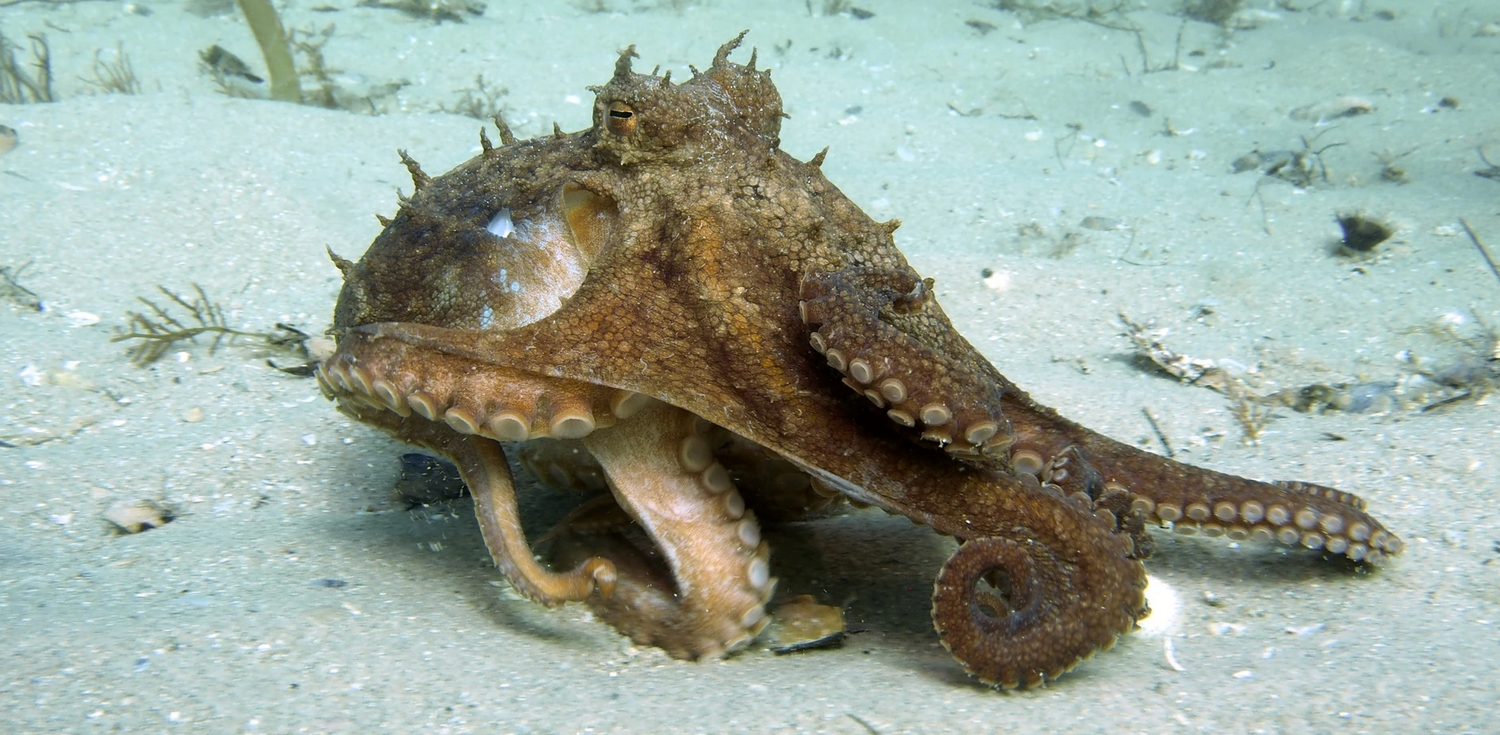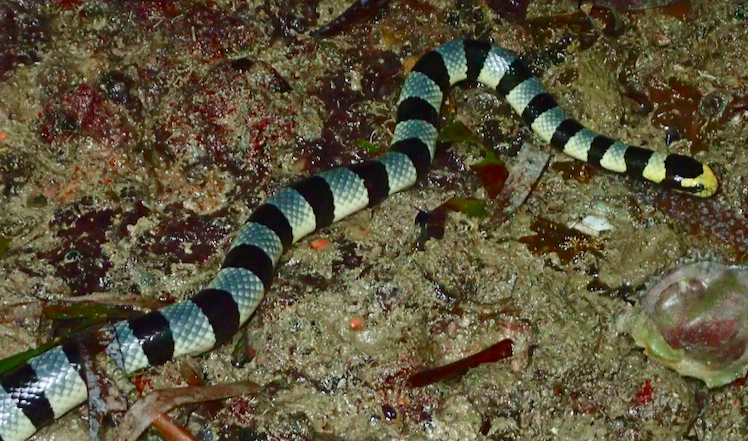Hua, Q.Q.H., Thomson, V.A., Strugnell, J.M., Martino, J.C., Gillanders, B.M. & Doubleday, Z.A. Using genomics and morphometrics to monitor data-poor and commercially exploited octopod populations. Mar Biol 170, 119 (2023). https://doi.org/10.1007/s00227-023-04270-9
Cryptic octopi
The taxonomy for the Octopodidae family is changing as science continues to describe new species. This has made the genus Octopus a “catch-all” which includes 150 species of benthic octopods while family trees are sorted out. The problem comes from new fisheries targeting these animals at astounding rates.
As fish stocks continue to decline worldwide due to over-fishing, octopod fisheries have emerged as a new market. This is concerning because catch compositions for these octopods are relatively unknown. Taxonomic issues and physical similarities between individuals make species identification difficult. As a result, nobody knows what octopod populations look like with this fishing pressure. There is a possibility of losing genetically distinct groups without us even realizing it. Maintaining genetic diversity is important for the health of any species to adapt to environmental changes such as disease or climate change.
This study from Hua, et al. investigated the benthic octopod fishery in Southeast Australia. Their goal was to identify which octopod species are caught, how to identify them through physical traits (morphology) and what distinct populations are present via differences in genetic information.
Location location location
Seven sites across Southeast Australia were sampled where octopod fisheries are concentrated. Five were located along the Eyre Peninsula including Venus Bay (VB), Mount Dutton Bay (MD), Eely Point (EP), Tumby Bay (TB) and Port Lincoln (PL). The Bass Strait included Victoria (VIC) and Tasmania (TAS).

VB: Venus Bay, MD: Mount Dutton Bay, EP: Eely Point, TB: Tumby Bay and PL: Port Lincoln. The Bass Strait included – VIC: Victoria and TAS: Tasmania. (Hua et. al., 2023)
Removing the veil
Two distinct Octopus species were identified in this study: the southern keeled octopus (Octopus berrima) and the pale octopus (Octopus pallidus). As for morphology, the width of the strongest/shortest arm, width of the largest sucker and length of the third arm to the beak differentiated the two species. Larger traits were typically associated with the pale octopus as it can grow to longer lengths.

A genetic divergence test using neutral loci was used to identify differences within each species’ population. A locus is a fixed position on a chromosome where a specific gene can be located. Therefore, a neutral locus is a gene that has no effect on the fitness of an individual. If enough neutral loci are different between two individuals, they can be considered genetically distinct.
Across the seven sites sampled, the southern keeled octopus was found at all five sites on the Eyre Peninsula, but not in Victoria or Tasmania. Three sub-populations were identified:
- Venus Bay
- Mount Dutton Bay and Eely Point
- Tumby Bay and Port Lincoln
The pale octopus was found in Port Lincoln and Tumby Bay as well as Victoria and Tasmania. Two sub-populations were identified:
- Tumby Bay and Port Lincoln
- Victoria and Tasmania

A good set of genes
Distance was the single greatest factor that influenced the genetic structuring discovered for both species. This can be attributed to their reproductive lifestyle. Octopods produce well developed hatchlings that immediately settle to the seafloor. Adults do not seem to swim far either, localizing to within a 50 kilometer range based on the genetic differences seen between the east and west side of the Eyre Peninsula. This creates an artificial barrier between distant populations, leading to genetic differences. However, the Victoria and Tasmania sites are significantly farther apart at 350 kilometers. Shared genes could come from individuals riding currents through the strait, allowing farther distances to be traveled.
The identification of these sub-populations for the southern keeled octopus and pale octopus demonstrate the need to better understand gene flow in heavily fished species. Protecting sub-populations maintains genetic diversity which is important for the health of the overall species.
I am a recent MSc graduate in marine biology from Bangor University, where I studied population dynamics of elasmobranchs off the coast of Wales. My interests lie in ecological data analysis to understand environmental processes and identify natural patterns. However, nothing beats being in the field and interacting directly with the marine life.


